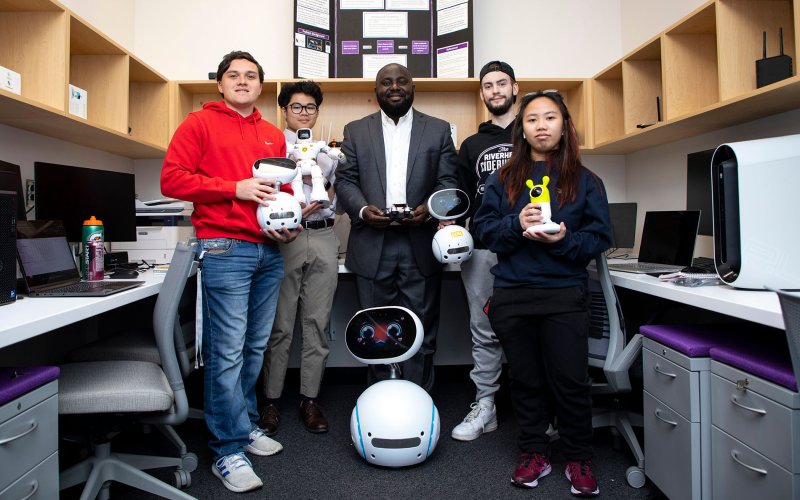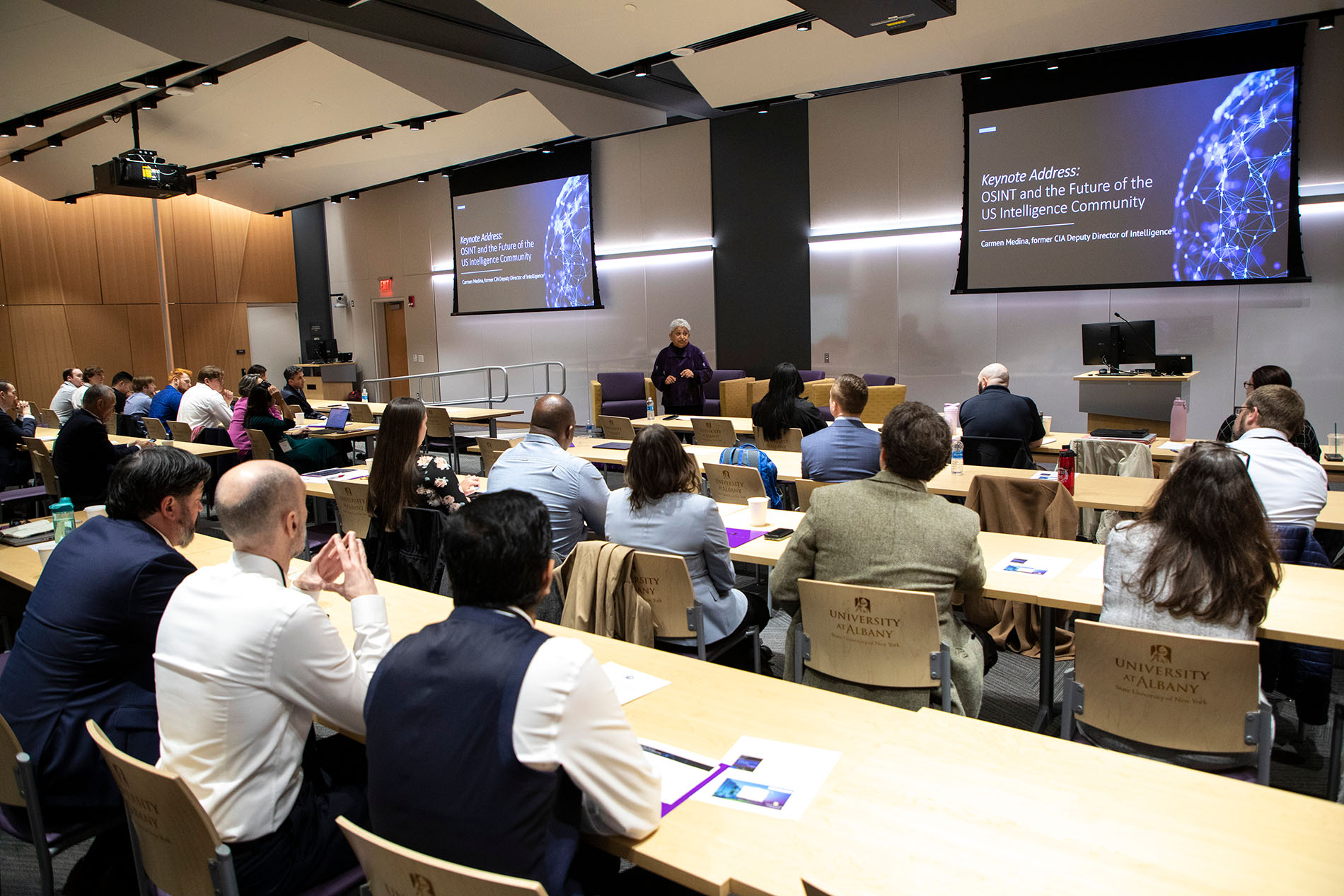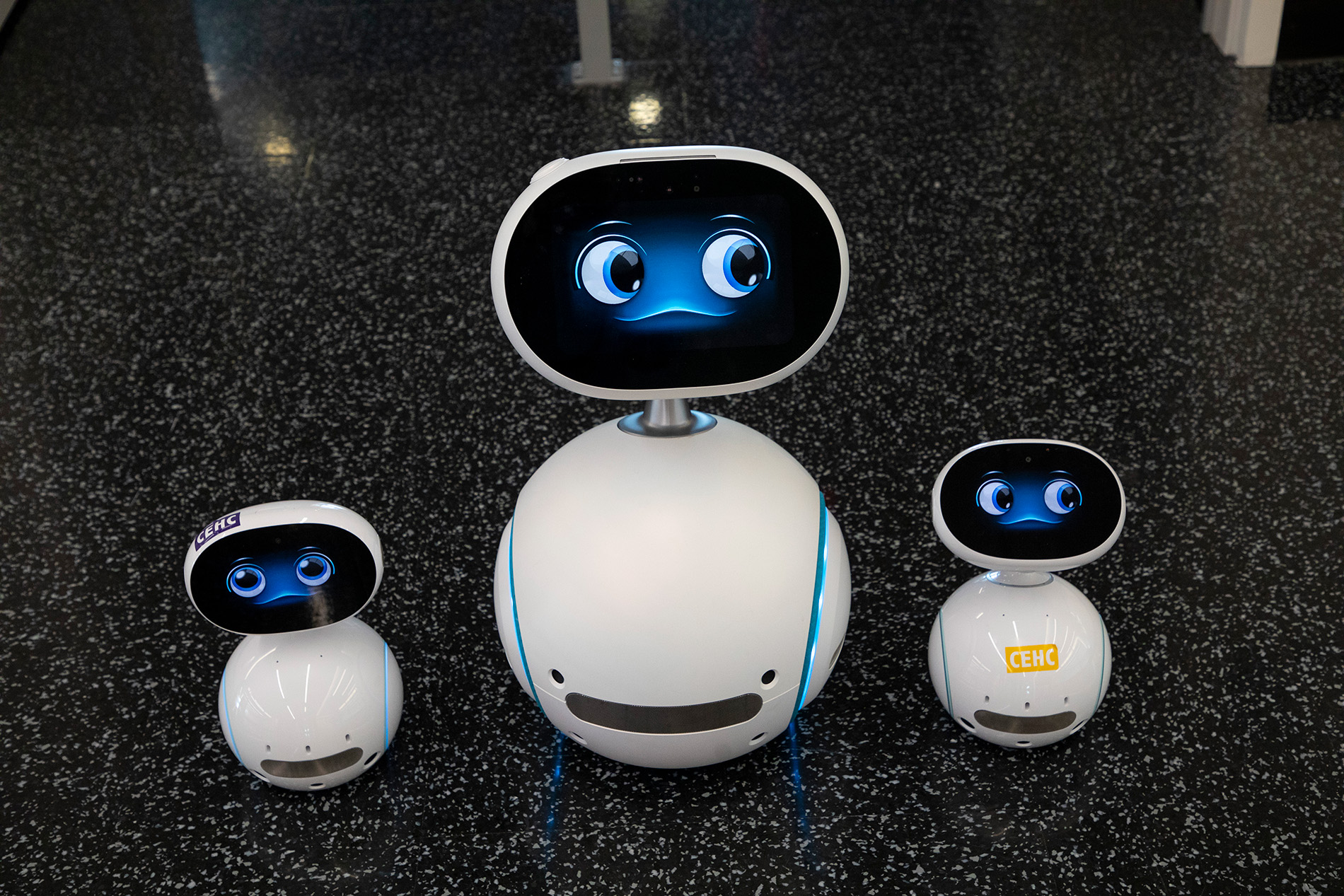CEHC Adds New Research Labs in Open Source Intelligence, Smart Device Security

By Mike Nolan
ALBANY, N.Y. (May 25, 2023) — The College of Emergency Preparedness, Homeland Security and Cybersecurity (CEHC) has added two more labs to its growing research ecosystem.
In April, CEHC hosted a celebration for the launch of its Open Source Intelligence Laboratory (OSI Lab). The lab, directed by associate professor Stephen Coulthart, will be a national focal point for advanced research on open-source techniques and tools in a wide variety of applications such as social media monitoring, digital forensics and geospatial analysis.
The Hack-IoT (Internet of Things) Laboratory is also now up and running. Directed by Assistant Professor Benjamin Yankson, the lab is focused on security vulnerabilities in a wide variety of smart devices that are available for consumer purchase.
The new labs add to a half dozen research entities operated by CEHC professors inside of UAlbany’s ETEC research and development complex — with more scheduled for launch in the near future.
“These new labs will play integral roles in our college’s growing research ecosystem,” said CEHC Associate Dean for Research Gary Ackerman. “Under their dynamic leads, we expect them not only to enhance the current capabilities of CEHC’s other labs and research centers, but to stand on their own in making valuable contributions to some of the largest challenges facing 21st-century society."
Open Source Intelligence Laboratory
Open source intelligence (OSINT) is the collection and analysis of data gathered from public sources to produce actionable intelligence that can help decision makers.
OSINT is often used by security professionals in checking for potential network or software vulnerabilities. It is also widely used in aiding legal disputes, investigations, and threat assessments. However, OSINT also has a dark side, as leaks of sensitive information can be used for malicious intentions.

At CEHC, Coulthart’s research focuses on intelligence analysis and the impact of emerging technologies on security. The OSI Lab will focus on promoting “OSINT for good.”
“One does not need to look far to see how the explosion in open source information is changing how we think about security,” said Coulthart, who is part of CEHC’s Department of Emergency Management and Homeland Security. “Look at the recent news about the Pentagon document leaks. It showed how quickly journalists using open source searching could track down the leaker. The Russian invasion of Ukraine has illustrated the usefulness of OSINT as well.”
“The purpose of this lab is to develop and share best practices around open source intelligence and to prepare the next generation of homeland security professionals.”
Outside of working with CEHC faculty and students, Coulthart also plans to host professional development seminars and produce open-source intelligence products for external stakeholders.
Hack-IoT Laboratory
Over the past few years, IoT has become an essential technology for many households, connecting to everyday items such as kitchen appliances, cars, thermostats, baby monitors and smart toys. A forecast by the International Data Corporation estimates that there will be 41.6 billion IoT devices in 2025.

As these devices become more integrated into our daily lives, serious concerns have been raised regarding their security and the vulnerabilities they might present for everything from personal privacy to critical infrastructure.
Through the Hack-IoT Lab, Yankson, and his team of student interns, are investigating and assessing IoT hardware, software and the all-important nexus between them, with a focus on identifying and mitigating security vulnerabilities.
“We are focused on any small-scale IoT device that can be connected to your home,” said Yankson, who is part of CEHC’s Cybersecurity Department. “Can this device be used by a cyber criminal to collect private information about you? We want to both help consumers understand the privacy risks and work with companies to make their devices more secure.”
CJ Kurdi, a CEHC graduating senior, served as Yankson’s lab manager position during the spring semester. He will return to the lab as a graduate student in UAlbany’s digital forensics and cybersecurity program.
“As a senior, I knew that I needed to get hands-on experience before I graduated,” said Kurdi. “This lab has given me an opportunity to test my cyber skills in a real-world setting. It’s been a game-changer.”
Several research papers from the Hack-IoT Lab were shared during the 18th International Conference on Cyber Warfare and Security in March.
CEHC Research Labs
The OSI and Hack-IoT labs add to CEHC’s roster of research entities, including:
- CEHC Makerspace
- The Center for Advanced Red Teaming
- The Drone Research Laboratory
- The Emergency and Risk Communication Message Laboratory
- Leadership Analysis and Influence Operations Laboratory
- Extreme Events, Social Equity, and Technology Laboratory
Another dozen labs at ETEC are scheduled to launch between 2023-25. You can learn more by visiting CEHC’s research page.




